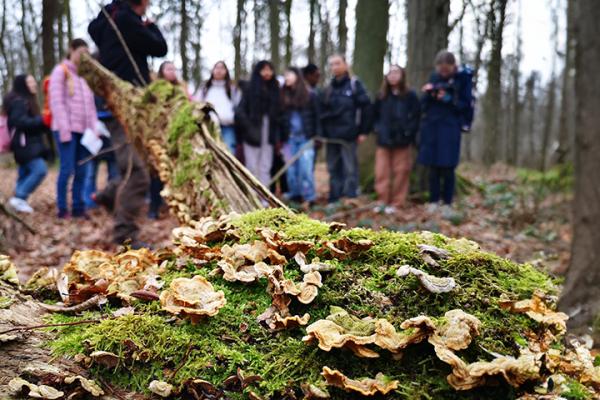‘Molecular movies’ bring atomic world into focus
It’s all down to attosecond lasers, which have been designed to emit a burst of light that lasts only a few attoseconds, or billionths of a billionth of a second. For scale, the difference between an attosecond and a second is the same as the difference between a second and the age of the universe.
The images gathered through these tiny snapshots are being collated by scientists to create so-called molecular movies, which are providing unprecedented insight into how electrons behave.
According to Professor Marc Vrakking, at the Max Born Institute in Berlin, most of what we know about atoms and materials comes from the way in which their electrons interact with light. Understanding more about this interaction will give scientists new insights into the molecular world and potential ways to manipulate it.
‘We still do not know why electrons behave the way that they do,’ he said. ‘The practical applications (of the new lasers) are vast. But the most important advance is that attosecond science makes it possible to ask questions that could not have been answered before.’
“‘Attosecond science makes it possible to ask questions that could not have been answered before.’
Prof. Vrakking coordinates the EU-funded ATTOFEL training network, which helps laboratories extend the depth and range of experiments in this emerging field. His team recently managed to track the behaviour of electrons ionised from Helium atoms over 200 attosecond time periods, compiling a movie in which their momentum shifts in response to light pulses.
Increasing clarity
Before attoscience, the problem with viewing the precise movement of electrons - for example in a chemical reaction - has been that they move over timescales that are measured in billionths of a billionth of a second.
Before a wave of visible light has even had time to complete an oscillation, the electron that scientists are trying to locate will have orbited its parent atom a dozen times over and the result looks as blurred as speeding traffic in a long-exposure photograph.
However, the challenge for scientists working on attosecond lasers went further than designing a way of emitting such short pulses of light. They also had to find a way of measuring them.
Professor Anne L’Huillier, who now leads the Attosecond Physics group at Lund University in Sweden, a partner in the ATTOFEL network, provided a partial solution to the first challenge together with her colleagues. When she fired numerous infrared rays into a noble gas she discovered that the gas then released back a few pulses of rapidly oscillating, extreme ultraviolet light.
The ability to produce light with such a short wavelength in a laboratory setting created the foundations for following the movement of electrons in more precise detail. ‘This result provided the first hope of time-resolving electronic processes,’ said Prof. L’Huillier.
However, because most materials absorb ultraviolet light, scientists also had to develop new ways of measuring these pulses by developing new optical components on the spot and performing the experiments under vacuum. The demands on equipment precision and stability were stringent as light crosses only a few hundred atoms in the timeframe of the measurements.
Generating conductivity
Attoscience research is still at a basic stage, with many of the potential applications yet to be discovered. However, scientists working on ATTOFEL and other EU-funded projects, such as ATTOTRON at the Max Planck Institute in Garching, are starting to investigate attosecond processes in solids.
Professor Reinhard Kienberger, who worked with Prof. L’Huillier in the EU-funded ATTO network to develop the technology, is now working on using attosecond laser pulses to cause currents to circulate in glass.
‘Turning a material conductive with a flash of light could lead to electronic switches (which are) orders of magnitude faster than the transistors that we have in computers today,’ he said. ‘Still, the real excitement lies in discovering what remarkable new properties these techniques are revealing in materials.’
Prof. Vrakking and his team tracked how electrons ejected from a helium atom respond to the attosecond pulses fired at them. Video courtesy Johan Mauritsson and Marc Vrakking.




